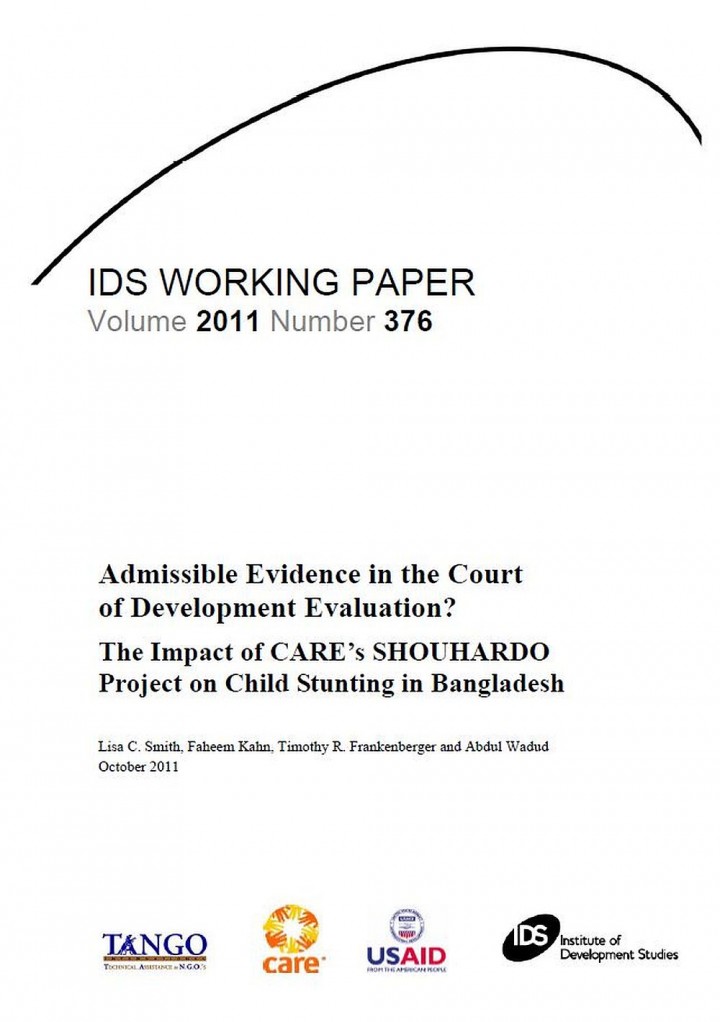Admissible Evidence in the Court of Development Evaluation? - The Impact of CARE’s SHOUHARDO Project on Child Stunting in Bangladesh
Smith, L. C. et al. (2011)

Published in: 2011
Pages: 43
Publisher:
Institute of Development Studies
Author:
Smith, L. C. et al.
Uploaded by:
SuSanA Admin
Partner profile:
common upload
2745 Views
3 Downloads
Location of library entry
Along with the rise of the development effectiveness movement of the last few decades, experimental impact evaluation methods – randomised controlled trials and quasiexperimental techniques – have emerged as a dominant force. While the increased use of these methods has contributed to improved understanding of what works and whether specific projects have been successful, their ‘gold standard’ status threatens to exclude a large body of evidence from the development effectiveness dialogue. In this paper we conduct an evaluation of the impact on child stunting of CARE’s SHOUHARDO project in Bangladesh, the first large-scale project to use the rights-based, livelihoods approach to address malnutrition. In line with calls for a more balanced view of what constitutes rigor and scientific evidence, and for the use of more diversified and holistic methods in impact evaluations, we employ a mixed-methods approach. The results from multiple data sources and methods, including both non-experimental and quasi-experimental, are triangulated to arrive at the conclusions. We find that the project had an extraordinarily large impact on stunting among children 6–24 months old – on the order of a 4.5 percentage point reduction per year. We demonstrate that one reason the project reduced stunting by so much was because, consistent with the rights-based, livelihoods approach, it relied on both direct nutrition interventions and those that addressed underlying structural causes including poor sanitation, poverty, and deeply-entrenched inequalities in power between women and men. These findings have important policy implications given the slow progress in reducing malnutrition globally and that the widely-supported Scaling Up Nutrition initiative aimed at stepping up efforts to do so is in urgent need of guidance on how to integrate structural cause interventions with the direct nutrition interventions that are the initiative’s main focus. The evaluation also adds to the evidence that targeting the poor, rather than employing universal coverage, can help to accelerate reductions in child malnutrition. The paper concludes that, given the valuable policy lessons generated, the experience of the SHOUHARDO project merits solid standing in the knowledge bank of development effectiveness. More broadly, it illustrates how rigorous and informative evaluation of complex, multi intervention projects can be undertaken even in the absence of the randomisation, nonproject control groups and/or panel data required by the experimental methods.
Bibliographic information
Smith, L. C. et al. (2011). Admissible Evidence in the Court of Development Evaluation? - The Impact of CARE’s SHOUHARDO Project on Child Stunting in Bangladesh. Institute of Development Studies
Filter tags
Case studies in other formats East Asia & Pacific English














